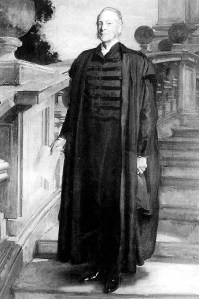It is America in the 1930s or forties and you are an unhappy, unsuccessful white man. For you there exists Popular Science: a magazine that published William James and Charles Sanders Peirce in the nineteenth century but now runs mostly repeats of the story about building a boat in the back yard and the story about the diagnostic skills of Gus the mechanic. For Popular Science by then, science was primarily a stimulus to fantasy. In the magazine’s advertisements the fantasy was overt, and what the fantasy typically evoked was a do-it-yourself hope of success through education.
A delicate vestige of the days of James and Peirce was the running ad for the Harvard Classics, a collection of books which promised its purchaser a comprehensive liberal education bounded within the left and right ends of what the copy called “Dr. Eliot’s Five-Foot Shelf.”

More modest hopes were encouraged by the enticements of a starter pair of breeding hamsters and a training course for railroad mail clerks. Specifically for the era of Marconi, too, were the very many courses in radio repair. In the unscientific literature, those became a fully developed trope: an ironic symbol of self-delusion. Readers following the stories of Connie in The Grapes of Wrath, Biff in Death of a Salesman and Jim in The Glass Menagerie knew from the first page that those radios of theirs never were going to work.
But the Popular Science Monthly of James and Peirce had carried no advertising and was printed in monochrome. The senses of Connie and Biff and Jim, on the other hand, were nourished by color. Reader, try to resist this.
This image doesn’t depict the car named Studebaker; it is Studebaker. Studebaker is one, only. In and around it, nothing is peopled. Studebaker is to be seen only from below, and Studebaker’s Indiana is only desert. In 1949, an influence on the mind of Popular Science’s failure of a reader was the new jet plane, and Popular Science made that innovation comprehensible by making it personal. Crushing Indiana underfoot, Studebaker has left doing behind and entered pure being. It is a being in synecdoche: a single organ standing for the whole body, a nose thrusting stiffly and forever into Indiana. Studebaker takes in forever Indiana’s dry, odorless, dead air.
Says the nose to the failed man: don’t worry. I will dispose of your life.
